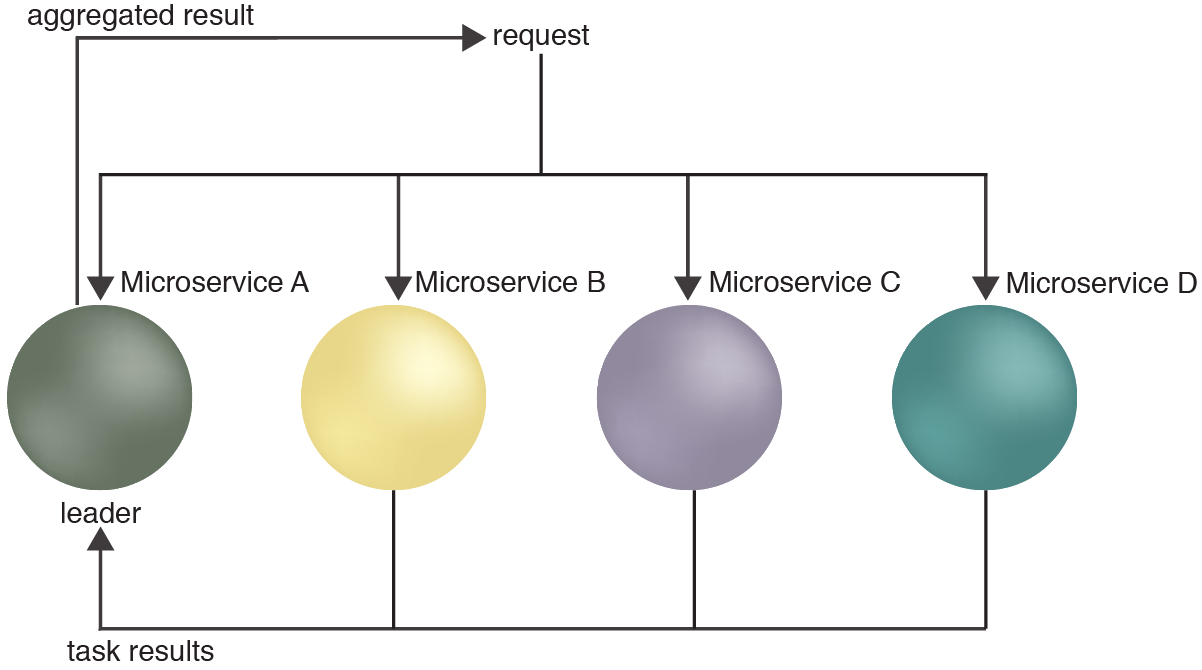Microservice and Containerization Patterns > Containerization Patterns > Leader Node Election
Leader Node Election (Erl, Naserpour)
How can multiple instances of the same microservice be coordinated to complete a greater task?

Problem
Solution
Application
The tasks and actions performed by a collection of collaborating instances in a distributed microservice architecture are coordinated by electing one instance as the leader to take responsibility for managing the others. This helps to ensure that tasks and operations are coordinated and that instances do not conflict with each other.

The leader receives task results and aggregates.
The complete pattern description explores application considerations and a scenario involving the leader election process.
This pattern is covered in Module 10: Advanced Microservice Architecture & Containerization..
For more information regarding microservice and containerization courses and accreditation,
visit the Microservice Architect Certification program page..
